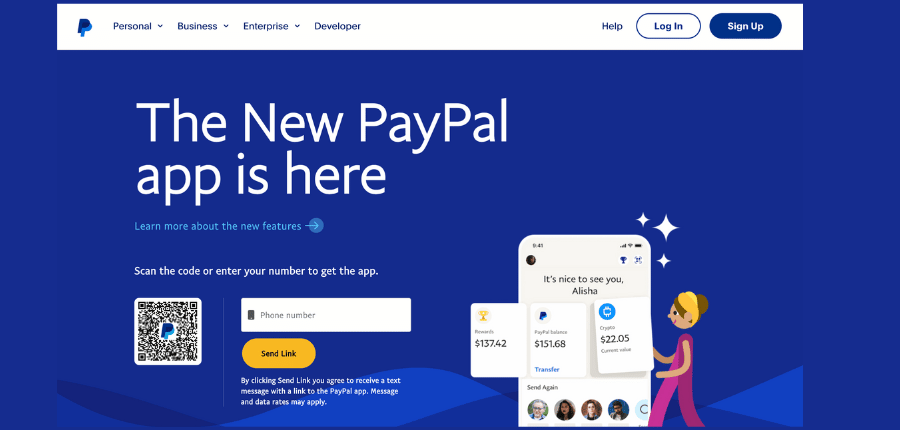Blockchain Explained: The Technology Behind Bitcoin Bitcoin�s emergence in the last decade has transformed the financial landscape, captivating the world�s attention as a groundbreaking digital currency. Behind this cryptocurrency lies a revolutionary technology known as blockchain, which serves as...

Blockchain Explained: The Technology Behind Bitcoin
Bitcoin�s emergence in the last decade has transformed the financial landscape, captivating the world�s attention as a groundbreaking digital currency.
Behind this cryptocurrency lies a revolutionary technology known as blockchain, which serves as the foundational pillar of Bitcoin and numerous other applications.
In this article, we will explore the intricacies of blockchain technology, delving deep into its structure, operation, and profound impact on various industries.
What Is Blockchain?
To grasp the technology behind Bitcoin, it�s crucial to understand what blockchain is. In essence, a blockchain is a distributed and decentralized ledger that records all transactions across a network of computers.
This ledger consists of a series of interconnected data blocks, each containing a batch of transactions. These blocks are linked together in a chronological order, forming a continuous chain.
Need investment education to be an informed investor? Click the image below and learn more:

Blockchain�s key characteristics include transparency, immutability, and security. Every participant in the network can view the entire transaction history, ensuring transparency.
Immutability is guaranteed through cryptographic hashing, making it nearly impossible to alter past transactions.
Additionally, security is maintained through consensus mechanisms that validate and record transactions.
How Does Blockchain Work?

Decentralized Ledgers
The heart of blockchain technology is decentralization. Instead of relying on a central authority, like a bank or government, blockchain operates on a peer-to-peer network.
Each participant (node) in the network maintains a copy of the ledger. This eliminates the need for intermediaries and minimizes the risk of a single point of failure.
Blocks, Chains, and Transactions
Transactions are grouped into blocks, which are then added to the chain. Each block contains a reference to the previous block (the �chain� part of the blockchain), creating a secure and chronological sequence of transactions. This structure ensures the integrity of the ledger.
Consensus Mechanisms
Two primary consensus mechanisms are used in blockchain networks: Proof of Work (PoW) and Proof of Stake (PoS). PoW requires participants (miners) to solve complex mathematical puzzles to validate transactions and add them to the blockchain.
PoS, on the other hand, selects validators based on the amount of cryptocurrency they hold and are willing to �stake� as collateral. These mechanisms ensure the network�s security and reliability.
Immutability and Security Features
Immutability is achieved through cryptographic hashing, which transforms transaction data into a fixed-length string of characters.
Any change in the data would require recalculating the hash for that block, rendering it inconsistent with the rest of the blockchain. This security feature makes altering historical transactions virtually impossible.
The Birth of Bitcoin
Satoshi Nakamoto and the Whitepaper
The concept of Bitcoin was introduced in a 2008 whitepaper authored by an anonymous entity known as Satoshi Nakamoto.
The paper, titled �Bitcoin: A Peer-to-Peer Electronic Cash System,� outlined the principles and mechanics of a decentralized digital currency.
Bitcoin�s Primary Purpose
Bitcoin was created with the primary goal of providing a decentralized alternative to traditional currencies and financial systems. It aimed to eliminate the need for intermediaries, enhance security, and increase financial inclusivity.
The First-Ever Bitcoin Transaction
On January 3, 2009, Nakamoto mined the genesis block of Bitcoin, marking the beginning of the cryptocurrency�s existence.
The first recorded transaction took place shortly thereafter when Nakamoto sent 10 bitcoins to computer scientist Hal Finney.
The Blockchain Architecture of Bitcoin
Bitcoin�s Blockchain Structure
Bitcoin�s blockchain consists of a series of blocks, with each block containing a set of transactions. The blocks are linked together in chronological order, forming a secure and immutable ledger.
Mining and Miners� Role
Mining is the process by which new transactions are added to the blockchain. Miners use computational power to solve complex mathematical puzzles, and the first one to solve them gets the right to add a new block of transactions to the chain. Miners are incentivized with newly created bitcoins and transaction fees.
The Role of Nodes
Nodes are essential components of the Bitcoin network. They validate and relay transactions, ensuring consensus across the network. Full nodes maintain a complete copy of the blockchain, contributing to its security and decentralization.
Transactions on the Bitcoin Blockchain
How Bitcoin Transactions Work?
Bitcoin transactions involve the transfer of ownership of bitcoins from one user to another. Each transaction contains inputs and outputs, with inputs referring to bitcoins being spent and outputs designating the recipients of the bitcoins.
Address and Private Key
Bitcoin addresses serve as the public identifier for a user�s wallet. The corresponding private key is a secret code that allows the owner to access and control their bitcoins. Security of private keys is paramount to prevent unauthorized access.
Transaction Validation and Confirmations
Transactions are broadcasted to the network and must be confirmed by miners to be added to the blockchain. Confirmation involves multiple blocks added after the transaction, making it increasingly secure over time.
Smaller transactions may require fewer confirmations, while larger transactions demand more to ensure security.
Advantages and Challenges of Blockchain in Bitcoin
Benefits of Blockchain Technology
Decentralization: Eliminating intermediaries and central control. Security: Cryptographic techniques ensure transaction integrity. Transparency: All transactions are publicly recorded. Trust: Immutable ledger builds trust among participants.Scalability and Energy Consumption Concerns
Scalability issues: Slow transaction processing times. Energy consumption: Proof of Work requires substantial energy.Regulatory Challenges and Privacy Issues
Regulatory uncertainty: Governments adapting to blockchain. Privacy concerns: Balancing transparency and confidentiality.Beyond Bitcoin: Other Use Cases of Blockchain
Diversification of Blockchain Applications
Blockchain technology has extended beyond cryptocurrencies, finding applications in various industries, including supply chain management, healthcare, and voting systems.
Examples of Blockchain Technology
Supply Chain: Tracking products from origin to destination. Healthcare: Securely storing patient data. Voting Systems: Enhancing transparency and security.Potential Future Developments
The evolution of blockchain technology continues, with potential innovations such as smart contracts, interoperability between different blockchains, and increased adoption in financial services.
Conclusion
In conclusion, blockchain technology serves as the cornerstone of Bitcoin�s success and holds profound implications extending far beyond the realm of cryptocurrencies.
Its decentralized architecture, fortified security measures, and transparent framework bear the potential to reshape various industries.
A solid grasp of blockchain�s fundamentals becomes indispensable for anyone intrigued by the future of finance and technology.
As our journey of discovery and innovation in this domain persists, the horizons of possibility expand endlessly, continually magnifying the impact of blockchain.�










